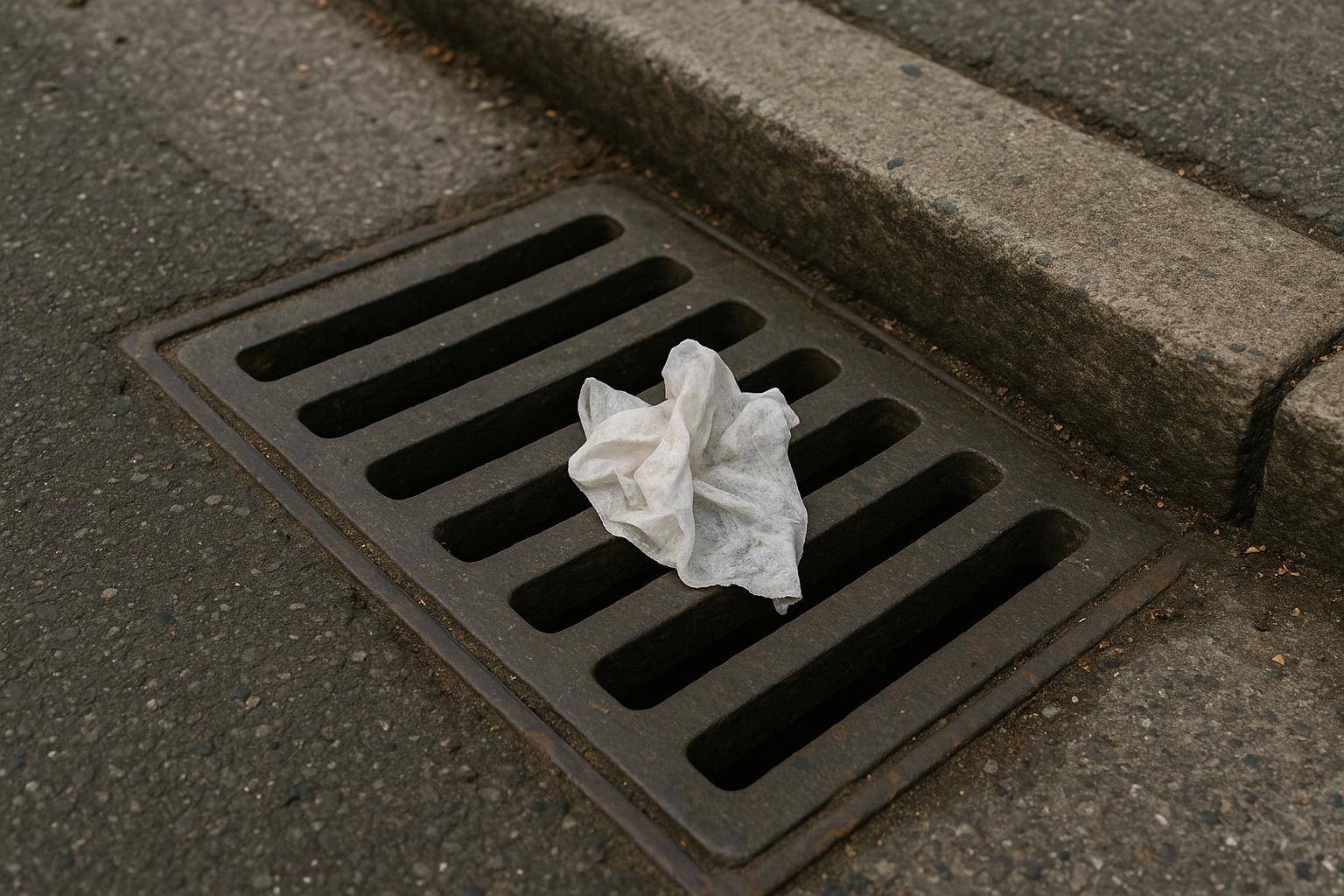Water companies in the UK are intensifying efforts to combat the costly and environmentally damaging issue of non-biodegradable wet wipes being flushed down toilets. Northumbrian Water has taken the unusual step of deploying specialised "wipe catcher" devices—ranging from smaller "porcupines" to larger models named "the Goliath," "the Barbarian," and "the Stinger"—to identify and trap these wipes within the sewage system. These devices are placed near manholes in areas where data analysis has flagged high incidences of pipe blockages caused by wipes. Once a hotspot is identified, Northumbrian Water investigates and can issue warning letters to households, followed by fines of several thousand pounds, or even prison sentences of up to two years for severe or repeated offenders.
The company reports that since implementing this crackdown, blockages on its 19,000-mile network have halved, and incidents of internal flooding caused by blocked pipes have decreased by about 65%. The initiative primarily targets regions in the North East such as Skelton in Redcar and Cleveland, Stockton-on-Tees, Sunderland, and parts of Northumberland and North Tyneside. Rob Miller, a sewage maintenance operative involved in the initiative, highlighted that individual households have been found flushing as many as 30 wipes per day, often unaware of the damage being caused. Northumbrian Water stresses that only toilet paper should be flushed, as many wipes, even those marketed as "flushable," contain plastics that do not break down and lead to persistent blockages.
The environmental impact of discarded wet wipes extends beyond the sewer system. Thames Water, working alongside the Port of London Authority (PLA) and environmental charity Thames21, recently completed a large-scale removal of a so-called "Wet Wipe Island" from the River Thames near Hammersmith Bridge in London. This accumulation spanned approximately 250 metres and was composed of around five million wet wipes, along with other debris such as towels, scarves, trousers, a car’s engine timing belt, and even false teeth. The presence of this congealed mass had altered the natural course of the river and posed significant threats to aquatic wildlife.
The clean-up operation lasted three weeks and involved two eight-tonne excavators using a "rake and shake" method to carefully separate the wipes and debris from natural sediment. The recovered waste was then responsibly disposed of to prevent further environmental harm. Thames Water revealed that approximately 3.8 billion wipes are removed from its entire network each year. Volunteers from Thames21 have also contributed to mitigating the problem, removing 23,000 wipes from a relatively small stretch of the Thames foreshore in just two hours, underscoring the scale of the issue.
The formation of "Wet Wipe Islands" in waterways like the Thames is a stark reminder of the wider environmental consequences of flushing wipes improperly. These wet wipe reefs disrupt ecosystems and threaten the health of rivers and the species that inhabit them. The collaboration between water companies, environmental organisations, and local authorities reflects a growing recognition of the need to address both the behavioural and infrastructural dimensions of this problem.
While Northumbrian Water’s methods are being shared with other companies across the UK, the challenge remains substantial. With the continued production and use of plastic-based wipes and public confusion over what can be safely flushed, tackling sewage blockages and preventing harmful environmental impacts requires sustained effort. Public education campaigns, stricter enforcement, and innovative technological interventions appear crucial to ensuring the long-term health of both urban infrastructure and natural waterways.
📌 Reference Map:
- Paragraph 1 – [1], [4]
- Paragraph 2 – [1], [4]
- Paragraph 3 – [2], [3], [6], [7]
- Paragraph 4 – [2], [3], [5], [6]
- Paragraph 5 – [1], [4], [5], [6]
Source: Noah Wire Services
